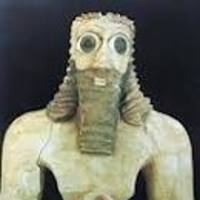Papers by J.R.C. Cousland
Studies in Religion/Sciences Religieuses, 1994
Essays in Honour of Martin Cropp
The Catholic Biblical Quarterly
Encountering the Parables in Contexts Old and New
The Catholic Biblical Quarterly
Not Sparing the Child : Human Sacrifice in the Ancient World and Beyond
Page 1. Th The Play of Texts and Fragments Page 2. The Play of Texts and Fragments Page 3. Mnemos... more Page 1. Th The Play of Texts and Fragments Page 2. The Play of Texts and Fragments Page 3. Mnemosyne Supplements Monographs on Greek and Roman Language and Literature Editorial Board GJ Boter A. Chaniotis KM Coleman IJF de Jong PH Schrijvers VOLUME 314 ...
New Testament Studies, 2015
This article examines the poisonous characteristics ofLolium TemulentumL., the weed that is gener... more This article examines the poisonous characteristics ofLolium TemulentumL., the weed that is generally identified with the tares (zizania) mentioned in Matthew's Parable of the Wheat and the Tares (Matt 13.24–30, 36–43). It identifies the weed, examines its pervasiveness in antiquity, as well as the nature and degree of its toxicity, and establishes that the tares of the Palestine of Jesus' day were likely poisonous. With this in mind, it considers whether the tares' toxicity is a factor in understanding the parable and its interpretation, concluding that it is very likely presupposed by both.
The Catholic Biblical Quarterly
Catholic Biblical Quarterly, 2003

Biblica, 2001
3 Maccabees demonstrates some suggestive affinities with Euripides' Bacchae. The protagonists... more 3 Maccabees demonstrates some suggestive affinities with Euripides' Bacchae. The protagonists of both works are kings who become theomachoi. Pentheus and Ptolemy IV Philopator rashly attempt to spy on things that they ought not, and each suffers for his repeated hybris. Each king also attempts to kill the devotees of the god against whom he struggles, and each is punished with a disordering of his mental state. 3 Maccabees further develops the theme of theomachy by stressing the associations between Dionysus and Ptolemy IV Philopator - the New Dionysus'. YHWH effortlessly triumphs over the 'New Dionysus' with Dionysus' own devices - sleep and oblivion. Ironically, Philopator is only able to serve Dionysus at YHWH's pleasure. The Jewish people in Egypt may well be under the authority of Philopator, but Philopator only rules by the authority of the God of Israel. The author, therefore, draws on the literary heritage of the Greeks to pillory Philopator's Dio...

Journal Of Theological Studies
A variety of ancient Jewish and Christian sources refer to a sexual liaison between Satan and Eve... more A variety of ancient Jewish and Christian sources refer to a sexual liaison between Satan and Eve, a union that resulted in the birth of Cain. This article assembles these texts, and then considers whether the Greek and Latin Lives of Adam and Eve are also aware of this union, and whether these texts have been influenced by the tradition of the Watchers sleeping with the daughters of men. While scholars have been divided on these issues for the last century, this article determines that the Greek Life does not allude or refer to any sexual liaison. The Latin Vita (perhaps in dependence on a different archetype) could allow for the notion, but it is only Latin P that uses language pointing to a literal sexual union. These findings suggest that the Greek and Latin lives did not originally contain a sexual seduction of Eve by the devil. It was only latterly that the narratives were influenced by the Watchers’ narrative or attempts to account for Cain’s maleficent nature.
The Vita Adam et Evae uses an unusual metaphor to describe Eve's state when she ceases her pe... more The Vita Adam et Evae uses an unusual metaphor to describe Eve's state when she ceases her penitential immersion in the Tigris river: 'her flesh was as grass from the cold of the water' (caro eius erat sicut herba). While a number of points of comparison have been adduced to explain the metaphor, including movement and texture, it is more likely to be the colour of Eve's skin - she is as pale as grass from the cold of the water.
The Journal of Theological Studies
The Catholic Biblical Quarterly
Journal of Biblical Literature, 2003











Uploads
Papers by J.R.C. Cousland